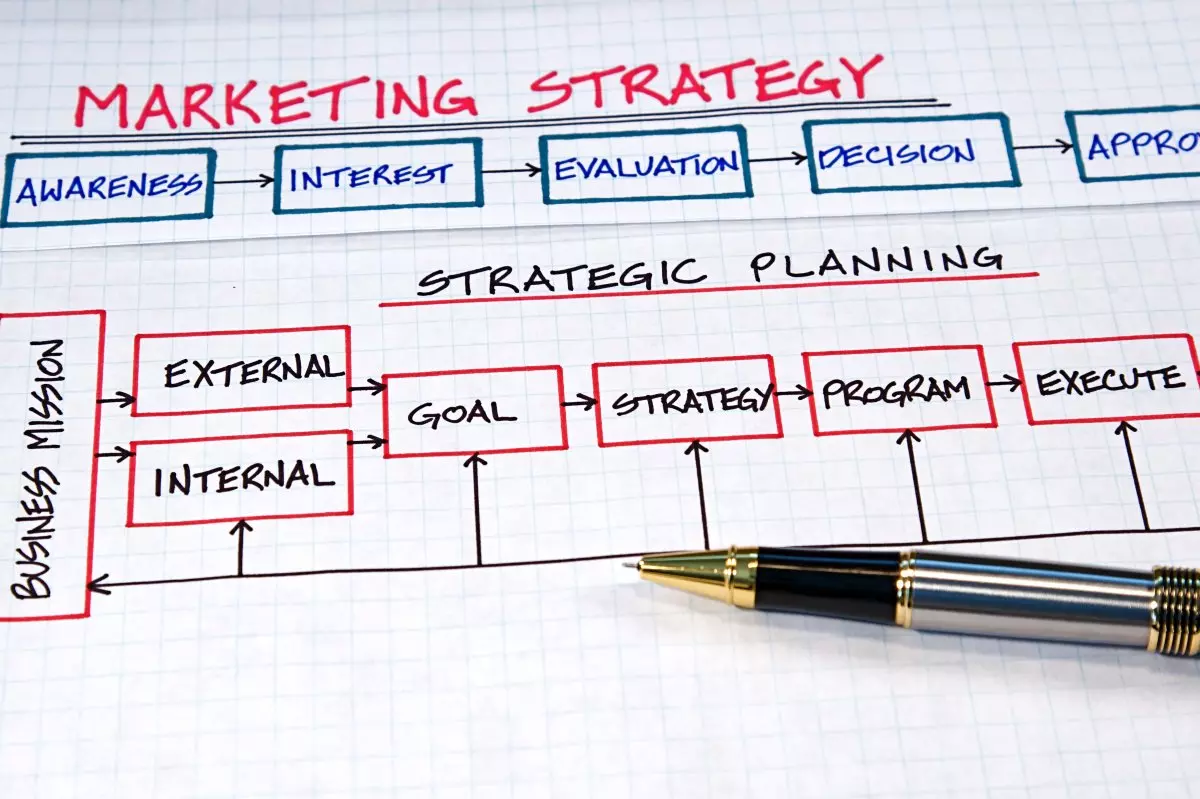Vertical marketing focuses ads on a specific target audience. For example, companies that make highly specialized products create vertical marketing campaigns to appeal to their narrow target demographics.
At the same time, vertical marketing emphasizes collaboration between manufacturers, distributors, and retailers to improve their operational efficiency and increase profits. Keep reading to learn more about vertical marketing, its benefits, and how to implement it.
What is a Vertical Market?
A vertical market includes companies that focus on a niche product or service. These companies generally don’t serve a large demographic. Instead, they focus on creating specialized services or products.

For example, within the food and beverage industry, you can cater your products and services to people who follow special diets and often belong to an underserved market. As a result, you can target customer niches, like people who follow vegan, gluten-free, or low-carb diets, and choose advertising venues like websites and magazines targeted toward health-conscious eaters.
You can also collaborate with influential nutritionists and animal rights advocates on social media platforms to advertise your business.
Other examples of vertical markets include the following industries:
- Pet care
- Baby care
- Fashion and Luxury
- Sports and Fitness
- Healthcare
- Legal services
- Financial services
In short, companies in a vertical market are attuned to a specific segment of consumers and apply marketing strategies that target their needs. As a result, they do not serve a broader market.
Vertical Marketing Definition
Vertical marketing is similar to regular marketing, but it is more specialized. Vertical marketing focuses its content and distribution on a specific demographic, as most demand arises from a niche segment of the market.
So, through vertical marketing campaigns, companies target consumers that are best aligned with their specialized product or service. As a result, vertical marketing focuses ads on a specific target audience or highlights a specialized benefit.
Vertical Markets vs. Horizontal Markets
Vertical marketing systems are made up of the producer, distributor, and retailer. All the parties work together as a unified group to serve the customer’s needs. While channel members operate as distinct entities, they are accountable to one owner or the most powerful channel member.
In a horizontal marketing system, the producer, distributor, and retailer are three separate organizations that operate under independent ownership. As a result, each entity focuses on minimizing costs and maximizing its own profits with little regard for other channel members.

Typically, companies use the vertical marketing system to focus their content and distribution on a specific demographic, like health-conscious consumers.
Conversely, companies that target a more comprehensive range of audiences and demographics use the horizontal marketing system. For example, a large grocery store chain that caters to a broad audience with varying preferences is part of a horizontal marketing system.
Types of Vertical Marketing Systems
The three primary stakeholders in a marketing system are:
- The manufacturer who produces the product.
- The distributor buys the product from the manufacturer and distributes it to the retailer.
- The retailer sells the product to the consumer.
All three organizations work together to deliver products to consumers, achieve the best possible efficiency, and maximize profits. To accomplish their goals, these organizations typically follow one of the three types of marketing systems: corporate, contractual, and administrative. Let’s dive into the unique characteristics of each type.
Corporate Vertical Marketing System
In the corporate vertical marketing system, one participant in the marketing channel controls the whole process. This includes production, market distribution, and retail sales.
Let’s take H&M as an example of the corporate vertical marketing system. H&M produces its products in its own facilities and sells them directly to its consumers using an in-house distribution system online or through its storefronts.
In summary, all processes are managed by H&M – the center.
Contractual Marketing System
Under a contractual marketing system, the producer, distributor, and retailer manage themselves separately. However, they will typically form an agreement to collaborate to increase revenue as a whole.
For instance, franchise companies often work under this type of vertical marketing system. For example, the Coca-Cola Company licenses its franchisees in different international markets to sell and distribute their products using their trademark, trade name, and logo.
Hence, the Coca-Cola Company is the manufacturer and gives its syrup concentrate to distributors in different countries. The distributor then administers it to the retailer that sells the product to the consumers.
Administered Marketing System
In an administered marketing system, the bigger and more powerful company typically controls the other members. However, this is done without any formal agreement. In other words, the company with the most market influence dominates the activities of the others.
For example, Procter & Gamble is a multinational consumer goods corporation that manufactures household products like Crest and Downy, which it later distributes to retailers. As Procter & Gamble is a giant international corporation, it requires deep commitment and cooperation from its retailers regarding pricing, promotions, shelf space, and display.
Benefits of Vertical Marketing
Now that we are acquainted with the vertical marketing system and its three types let’s explore its advantages. There are several benefits of vertical marketing systems.

These include cost efficiency, higher profits, and more.
- Better Control: Companies that use the corporate vertical marketing system can make their businesses more efficient. This is because they can control every aspect of the process, from production to distribution and sale.
- Problem-Solving: Total control over the distribution channels helps quickly identify problems and resolve issues to become more efficient. This advantage may be more significant in a corporate vertical marketing system.
- Increased Efficiency: As manufacturers, distributors, and retailers work together towards a common goal, they can design and implement more efficient methods.
- Improved Sales Messaging and Branding: By specializing in a specific vertical and directing your marketing efforts to one particular niche, you can establish yourself as an authority in your industry.
- Better Understanding of Customer Preferences: Companies may find it easier to gain insight into customer preferences. In return, this can help companies develop new products and services, which may increase customer satisfaction, loyalty, and profit.
- Less Costly: In a vertical marketing system, parties combine resources which can lower overall costs.
- More Investment Opportunities: A vertical marketing system may be less expensive, meaning the business can invest the amount of capital saved in other areas.
Why Should I Avoid Vertical Marketing?
Given its potential challenges, there may be better options than a vertical marketing system for some companies. Here are some of its disadvantages:
- Oligopoly: In an administered marketing system, companies with the most power retain control. As a result, one company sets prices as there is less competition in the field.
- Flexibility: Smaller firms specializing in one aspect of the distribution channel can react to market changes faster. On the other hand, if the distribution networks are all under a single company, promptly responding to market changes may be unrealistic.
- Coordination: Getting involved in all the channels can be overwhelming for some businesses, especially small businesses. Instead of coordinating all activities, it may be preferable to focus on manufacturing methods while outsourcing distribution and retail services to a third party.
Best Practices for Vertical Marketing
Here are some of the best practices for designing a successful vertical marketing strategy to increase the chances of running a profitable company. These include thoroughly researching your industry and target audience, developing and implementing your content strategy, and measuring your business’s performance.
Step 1: Do the Right Research
Vertical marketing systems focus on a specific demographic. Hence, businesses need to take their time in researching their target audience. Then, they must refine their messages, tone of voice, and marketing assets to meet the consumers’ needs.
Doing the proper research and brand audit will set the foundations for the success of your marketing campaign and enable you to direct your time and money to the demographics most interested in your products or services.

Consider conducting market research, surveys, and user interviews face-to-face or over the phone to collect data about your target persona. Your data should include their motivations, pain points, the channels they frequent, age, gender, and location.
By analyzing your collected data, you will get valuable strategic insight into your current or potential customers and discover new opportunities that favor business growth and sustainability.
Step 2: Develop a Content Strategy
After figuring out your company’s buyer personas, develop a content strategy to connect the business with the target audience. Remember that a vertical marketing strategy requires marketing content toward a specific group.
So, explore different platforms to find where your customers are and then join them. Ensure your branding and marketing content is aligned to define the company’s unique selling points.
For instance, Facebook is a versatile platform where all types of businesses can upload their content and engage with their audience. You could promote content from your blog and behind-the-scenes videos of your business and join a group to build a relationship with your customers.
Instagram is best for sharing eye-catching images and short-form videos to show off your products or services. It also allows your business to connect with customers by sharing questions, polls, and links and receiving direct messages. Remember to use industry-related hashtags to boost your discoverability.
Step 3: Make Yourself Visible
You can start writing blog posts and creating educational, inspirational, interactive, and entertaining social media content, infographics, and case studies to increase your company’s visibility.
For example, if you are targeting vegan consumers, you could share recipes, highlighting their benefits and nutritional value. You can also create infographics on a vegan person’s carbon footprint compared to a non-vegan person. At the same time, you could also share case studies highlighting the benefits of following a plant-based diet for yourself, the animals, and the environment.
Also, consider attending industry events, industry-specific forums, and even in-person meetings or conferences. As a result, you can collaborate with leaders in your industry to determine how you plan to grow your online and offline presence.
Step 4: Measure and Analyze the Performance
Finally, business owners can measure and analyze their company’s performance to assess whether their vertical marketing strategies resonate with their specific demographic. This way, you can track the impact of your marketing campaigns, ensure you’re posting the right content, and reach your target audience through the correct channels.

With the help of ad tracking software, businesses can measure, test, and revise ads based on consumer behavior. Some ad tracking tools that measure KPIs include Facebook Pixels, Google Analytics Pixel, and Instagram Insights. These tools allow you to track traffic and conversion, your reach among your followers and non-followers, and the time of the day your followers are most active. As a result, businesses can use this data to understand what drives consumer actions, optimize their content and refine their marketing campaigns.
Sum up
A vertical marketing system is when the manufacturer, distributor, and retailer work together to meet consumers’ needs and maximize their profits.
Their combined efforts can also increase efficiency, sales, brand recognition, and investment opportunities. However, before adopting a vertical marketing system, ensure you have researched and understand your buyer persona to serve your consumers and their needs better.
Table of Contents
- What is a Vertical Market?
- Vertical Marketing Definition
- Vertical Markets vs. Horizontal Markets
- Types of Vertical Marketing Systems
- Corporate Vertical Marketing System
- Contractual Marketing System
- Administered Marketing System
- Benefits of Vertical Marketing
- Why Should I Avoid Vertical Marketing?
- Best Practices for Vertical Marketing
- Step 1: Do the Right Research
- Step 2: Develop a Content Strategy
- Step 3: Make Yourself Visible
- Step 4: Measure and Analyze the Performance
- Sum up
Have a Question? Ask an Expert!
Fill out the form below to get in touch with one of our marketing specialists.
